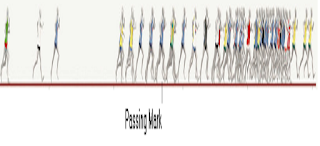We Are All Winners
When the median in an exam is 91%, it raises questions. A median as high as this coupled with a relatively small standard deviation, for example, 6%, provides a good description of the grade distribution. About eight five percent of the class scored 85% or higher in the class. Was the exam too easy? That would be the first question. There is a clear conclusion, however. Whatever measure was used (in this case, an exam), it was not discriminating enough to spread the scores.
In some states in the US, new teacher-evaluation systems are being tested. Preliminary results have been reported and Stephen Sawchuk of Education Week describes these in his article, "Teachers' Ratings Still High Despite New Measures". The highlights are the following. In Michigan, 98% of teachers are either effective or better. For Florida, it is 97%, Tennessee 98%, and Georgia has 94% of its teachers being rated effective or better. Thus, the preview from these new evaluation procedures says that most teachers in the public K-12 schools in the United States are either effective or better. Of course, a similar question is now raised. Is the new teacher evaluation methodology lacking in discriminatory capacity? Is the new measure incapable of distinguishing between a weak and a good teacher? The new teacher-evaluation measure includes observations in classrooms. These observations are made mostly by the principal. There is therefore that suspicion that principals are easy graders.
There is nothing wrong with a class having a median score of 91% if most of the students did do their part, if the exam indeed covers the material that the students expected to be in the test. In fact, it is possible to have even a higher median and a tiny standard deviation if all the students have indeed learned the material before the exam. Of course, even with this realization, there is still suspicion. Can nothing really be that good? Of course, high effectiveness is possible. Antibiotics can do this - able to clear completely an infection. It is thus possible in learning as well. All students can do well if the instruction is effective and learning does happen. But, the exam may still be too easy. One can never take that suspicion away. However, a teacher cannot give an unfair exam just to pull down the curve. Assessment requires sincere intentions. It cannot be attached to a desired result.
Thus, it is not surprising that the preliminary results of teacher evaluations are met with mixed emotions and responses. K-12 education in the United States is perceived to be facing challenges or problems. Teacher quality is an important factor so teacher evaluations must give a spread of effectiveness across schools in any state. All teachers cannot be performing effectively well if there are students who are not doing well in standardized exams. Certainly, that point can be made. Unfortunately, this point makes an important assumption: Teaching equals learning. One can only compare teaching evaluations against students' scores in standardized exams if indeed teaching equals learning. Teacher quality is indeed a major factor influencing learning but it is not the only one. Thus, one reaction to these preliminary results is that it clearly shows that the difference in learning outcomes in K-12 schools in the US is primarily due to socio-economic factors. One comment posted on the Education Week site sums up this interpretation excellently:
There are so many things disturbing about this article. First of all, the beginning idea that because an overwhelming percentage of teachers are rated as being competent at their jobs [means] the evaluation tool must be broken is ridiculous. Teachers are college graduates with certification which means they have passed the standardized tests, shown competence in students teaching and passed their coursework with high marks. Many hold advanced degrees. Most have years of experience. These are not people just off the street.
Second, you cannot have a fair evaluation if you are going to mandate a certain percent fail or a certain percent can be superior. Forcing the data to a bell curve and then calling the bottom failing is ridiculous. You could do the same to Olympic athletes. There will be swimmers whose times are slower than others, but that does not mean that they are not excellent athletes.
Teachers are doing their job as professionals but that of course, teachers can always improve. Athletes still train after they make the Olympic team.
It is time to face the inconvenient truth that socioeconomic factors are the largest predictor of student achievement. Look at your state's AYP (Adequate Yearly Progress) data site. The higher rates of proficiency will be at the wealthier districts. And that problem won't be fixed by teacher evaluation protocols.

Comments
Post a Comment